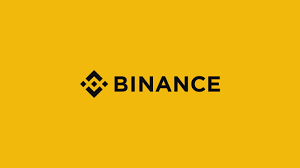Visa, the global payments giant, has announced a new partnership with SmartMedia Technologies to offer new Web3 loyalty rewards.
The goal is to involve users more, through loyalty that will allow them to experience new digital and physical experiences.
Visa and SmartMedia Technologies offer new Web3 loyalty rewards to engage users more
Visa, in partnership with SmartMedia Technologies, is launching a new loyalty solution, offering its users new Web3 rewards.
The purpose of the global payments giant is to make the brand-consumer exchange more engaging, also through new digital and physical experiences.
@Visa and SMT are taking loyalty to the next level!
With the combination of Visa’s digital payment solutions and SmartMedia Technologies’ enterprise web3 platform, financial institutions and merchants can have their own branded mobile app and create their own marketplaces and…
— SmartMedia Technologies (@SmartMedia_Tech) January 4, 2024
“@Visa and SMT take loyalty to the next level! Thanks to the combination of Visa’s digital payment solutions and SmartMedia Technologies’ web3 corporate platform, financial institutions and merchants can have a branded mobile application and create their own markets and communities.
The Visa Web3 Loyalty Engagement solution allows brands to: engage customers with virtual, digital, and real experiences; provide a seamless digital experience that can unlock promotional rewards, benefits, and advantages; offer new and existing customers fun and rewarding experiences in the digital world.”
The new service is called Visa Web3 Loyalty Engagement Solution and aims to create added value in engaging and retaining users of the payment giant.
And indeed, the new Web3 rewards will allow customers to have digital wallets to collect tokenized tickets, loyalty coins, digital collectibles, and other benefits offered by brands, which can then be used for virtual and physical experiences.
According to the words of Kathleen Pierce-Gilmore, SVP and Global Head of Issuing Solutions at Visa, the new loyalty service will allow brands to reward customers both for their transactions and for their active engagement.
This is therefore a new era of rewards, which responds to the current desires of people who want to be rewarded not only for their purchases and loyalty, but also for their commitment and interactions with a brand, especially if it is fun, easy and rewarding.
Visa and the Web3 loyalty rewards service
In order to succeed in this initiative, Visa has relied on the collaboration of SmartMedia Technologies, which has created a corporate platform that connects Web2 and Web3 to provide brands with levels of prize personalization for their customers.
And indeed, through Visa Web3 Loyalty Engagement Solution, brands can engage customers by providing a digital wallet where they can apply rewards – such as perks and benefits – for virtual, digital, or real experiences in various sectors such as travel, sports, and more.
In this regard, Tyler Moebius, CEO of SmartMedia Technologies, said:
“SmartMedia Technologies is excited to collaborate with Visa to revolutionize the future of loyalty and engagement. Our Web3 corporate platform seamlessly integrates with Visa’s digital payment solutions, offering brands unparalleled experiences to connect with consumers. This collaboration is not only about enhancing rewards for customers, but also redefining the exchange of value between brands and consumers in a mobile payment-centric world.
We are committed to providing experiences that are as rewarding as they are engaging and relevant to today’s ever-evolving consumers.
Web3 and the significant growth of Blockchain Gaming
Being in the Web3 world, just last month we talked about the significant growth that blockchain gaming (GameFi) is experiencing.
Despite being still far away from the achievements reached by the traditional gaming market, it seems that Web3 gaming has recorded significant numbers.
And indeed, according to data from market intelligence company Grand View Research, the blockchain gaming market was worth more than $4.8 billion in 2022, with a forecasted expansion at a compound annual growth rate (CAGR) of 68.3% from 2023 to 2030.
CoinGecko also reveals another important data, stating that every day more than 800,000 people play Web3 games. This figure pales in comparison to the Web2 game Minecraft which (alone) has an average of over 11.9 million players per day.
Anyway, blockchain gaming is growing rapidly, to the point that even CoinGecko has stopped to describe the differences between a GameFi player and a traditional player.
In practice, while traditional games have regular players, in blockchain games there are yield farmers, degenerate traders, institutional investors, bots, actual players, and a constantly evolving list of participant types who connect their wallets to the protocols.









